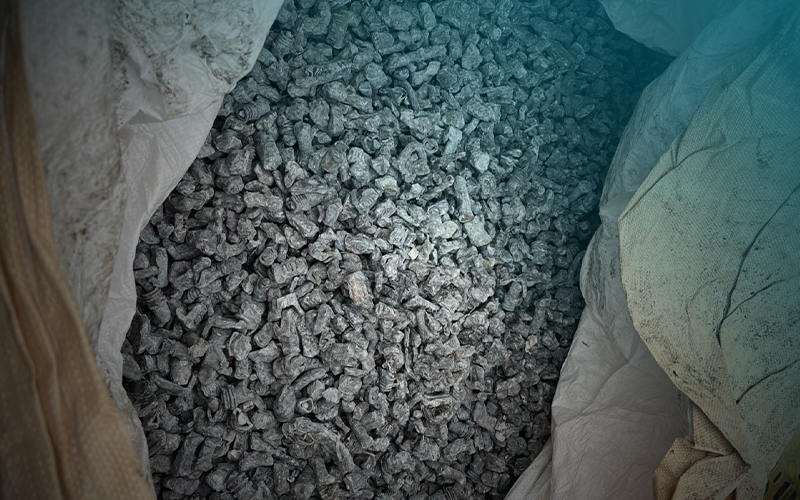
Battery Lugs
To be free of Scrap Lead, Wheel weights, Battery plates, Rubber and/or plastic case Material and other Foreign Material. A minimum of 97% Metallic content is required.
Wheel Weights
To consist of Lead tire balances with or without iron clips. Not to include Scrap Lead, lugs or plates unless expressly agreed to. To be free of foreign material.
What is a Lead Terminal?
A lead terminal is a component made primarily from lead or lead alloys used to create reliable electrical connections, especially in lead-acid batteries and other electrical equipment. Lead terminals provide corrosion resistance, good conductivity, and mechanical strength to ensure efficient current flow.
Composition
Pure Lead (Pb): Often used for corrosion resistance.
Lead Alloys: Sometimes alloyed with small amounts of antimony (Sb), tin (Sn), or calcium (Ca) to improve mechanical strength and reduce corrosion.
Usage of Lead Terminals
Automotive and Industrial Batteries: Lead terminals connect battery cells and external circuits.
Electrical Connectors: Used in heavy-duty electrical applications requiring corrosion resistance.
Backup Power Systems: Found in UPS and standby power supply batteries.
Marine and Renewable Energy: Used in batteries for boats, solar, and wind power storage.
Corrosion-Resistant Contacts: Lead terminals resist acid corrosion from battery electrolyte.
Key Highlights
Excellent Corrosion Resistance: Essential for battery environments.
Good Electrical Conductivity: Ensures efficient current transfer.
Mechanical Durability: Alloying enhances strength and longevity.
Compatibility: Designed to fit standard battery posts and connectors.
Recyclable Material: Lead terminals can be recycled to recover lead.
FAQ
Because lead terminals resist corrosion from battery acid and provide reliable electrical connections.
Antimony, calcium, and tin are common additions that increase strength and reduce corrosion.
Yes, lead terminals are recyclable, and recovered lead is reused in battery manufacturing.
They are typically cast or stamped from lead or lead alloys and then finished for precise fit and conductivity.
When handled with proper safety protocols to avoid lead exposure, they are safe for industrial use.



